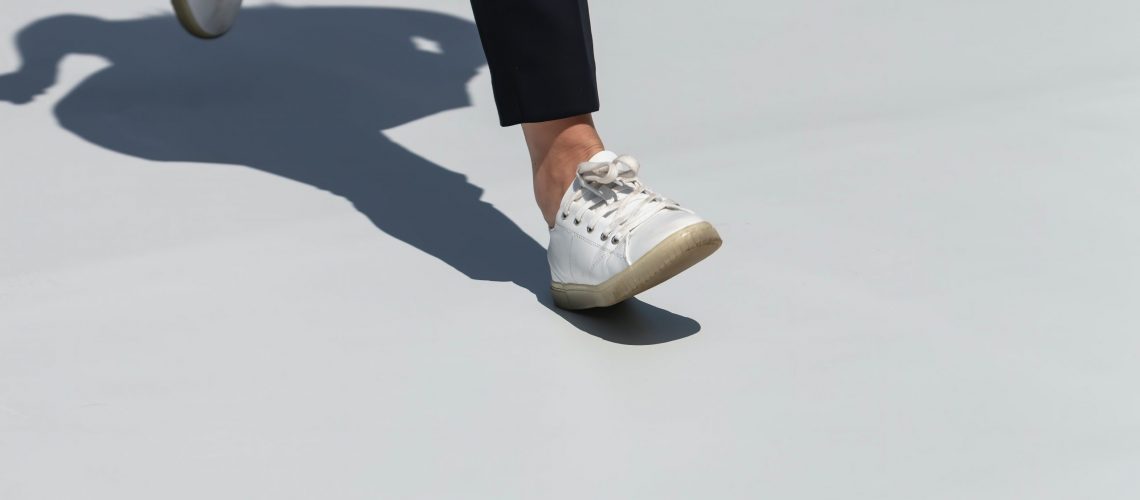Walking. It’s so simple. Left foot, right foot, left foot, right foot. It’s one of those things you don’t really think about too much, or at all. That is, until you can’t do it any more, or it causes you pain and discomfort.
Walking upright on two legs is a quintessentially human characteristic. No other creature on earth walks like we do.

Upright bipedal locomotion walking requires a different type of brain than that which is required for quadrupedal locomotion. So the fact that human brains are unique and our method of locomotion is unique are not coincidental. Daniel Wolport maintains that the only reason you (or any other creatures) have a brain is to organise movement. And the most fundamental human movement is upright walking. There are of course two other distinctly human characteristics we could discuss here. Namely speech/language and opposable thumbs. But I will save them for another day.
The entire first 0-24 months of our lives is a self-guided, self-directed developmental journey towards walking. Almost everyone learns to walk purely through a process of trial and error movement exploration. We learn to roll over, sit, crawl, and eventually walk, and run. And all of this before we ever learn how to think. Movement proficiency first, cognitive development second. Hmmm….
Compare this to the quadrupedal animals that can walk within moments of birth. Interestingly it is generally prey animals that can walk immediately, for obvious reasons; to escape predators. Predators can take a bit longer as their parents will provide food and protection in the meantime. Just like humans.
But how do you walk? Do you walk well? Can you walk freely and comfortably? That is, can you walk for long distances without getting fatigued? Or experiencing pain and/or stiffness? Or maybe you don’t walk much at all because it causes pain or discomfort.
Look at the soles of a pair of your shoes that you walk in a lot? Are the wear patterns symmetrical? If they’re not why do you think that is?
Do you wear high heels a lot? Do you think wearing them changes the way you walk? Do they make your feet/ankles/knees/hips or even your neck, hurt? Do you think that might be problematic in the long run?
Because walking is such a fundamental movement pattern it makes a fantastic means of assessment. In Somatics we use walking as a before and after. Why? Because it can tell us an awful lot about how free or stiff our bodies are and how much unneccesary muscular tension we may be holding. The three reflexes, when habituated, also have a very strong influence on our gait/walking pattern. Being unable to walk freely can indicate an injury, disability or simply excessive muscular tension.
Have you ever thought about how you walk? Why would you, you’ve been doing it for years. But walking smoothly and freely requires you to be relaxed. Particularly in your trunk. The arms should be able to swing freely and the legs too. The shoulder girdle needs to be resting squarely on the ribs and the waist needs to be relaxed so the hips can rotate forward and back and also tip up and down/side to side. Walking ‘freely’ requires you to be ‘free’. And running even more so.
Walking freely is low effort, efficient, smooth, comfortable and can be sustained over long distances easily.
Walking that is not smooth, efficient, comfortable and free cannot be sustained over long distances because it will cause either excessive fatigue, stiffness or pain.
It’s also worth noting that we evolved walking over highly varied and uneven terrain. Beaches, rocks, plains, mountains, sand, stone, grass. The uniform, flat even paths of modern civilisation are a very new phenomenon. Walking over uneven ground is far more demanding than walking on the flat and also requires much more freedom of movement through the trunk and also through the hips and ankles as you have to orient your hips, legs and feet so you can navigate the surface and maintain your balance as you do so.
If you’ve never really thought about how you walk, let me guide you through a Walking assessment via the audio file below. You can listen directly here or download the audio to your device and follow along the next time you go for a walk.
I’d love to hear what you learn from it.
Don’t forget you can Learn Somatics with me directly from anywhere in the world via 1-1 online Sessions. All you need is an internet connection and enough floor space to lay down.
Thanks for visiting, until next time…
Photo by Ricardo Gomez Angel on Unsplash
